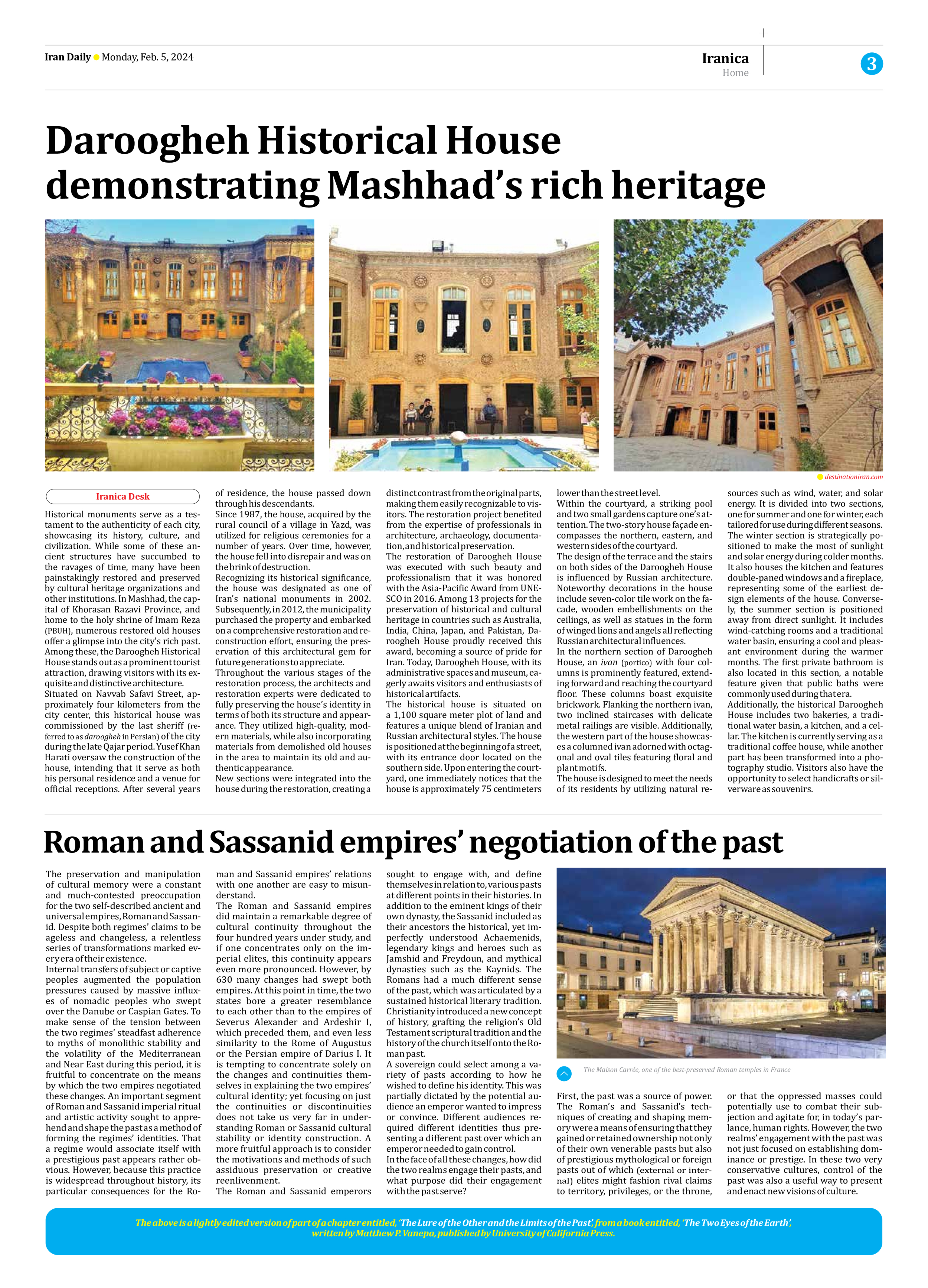
Roman and Sassanid empires’ negotiation of the past
The preservation and manipulation of cultural memory were a constant and much-contested preoccupation for the two self-described ancient and universal empires, Roman and Sassanid. Despite both regimes’ claims to be ageless and changeless, a relentless series of transformations marked every era of their existence.
Internal transfers of subject or captive peoples augmented the population pressures caused by massive influxes of nomadic peoples who swept over the Danube or Caspian Gates. To make sense of the tension between the two regimes’ steadfast adherence to myths of monolithic stability and the volatility of the Mediterranean and Near East during this period, it is fruitful to concentrate on the means by which the two empires negotiated these changes. An important segment of Roman and Sassanid imperial ritual and artistic activity sought to apprehend and shape the past as a method of forming the regimes’ identities. That a regime would associate itself with a prestigious past appears rather obvious. However, because this practice is widespread throughout history, its particular consequences for the Roman and Sassanid empires’ relations with one another are easy to misunderstand.
The Roman and Sassanid empires did maintain a remarkable degree of cultural continuity throughout the four hundred years under study, and if one concentrates only on the imperial elites, this continuity appears even more pronounced. However, by 630 many changes had swept both empires. At this point in time, the two states bore a greater resemblance to each other than to the empires of Severus Alexander and Ardeshir I, which preceded them, and even less similarity to the Rome of Augustus or the Persian empire of Darius I. It is tempting to concentrate solely on the changes and continuities themselves in explaining the two empires’ cultural identity; yet focusing on just the continuities or discontinuities does not take us very far in understanding Roman or Sassanid cultural stability or identity construction. A more fruitful approach is to consider the motivations and methods of such assiduous preservation or creative reenlivenment.
The Roman and Sassanid emperors sought to engage with, and define themselves in relation to, various pasts at different points in their histories. In addition to the eminent kings of their own dynasty, the Sassanid included as their ancestors the historical, yet imperfectly understood Achaemenids, legendary kings and heroes such as Jamshid and Freydoun, and mythical dynasties such as the Kaynids. The Romans had a much different sense of the past, which was articulated by a sustained historical literary tradition. Christianity introduced a new concept of history, grafting the religion’s Old Testament scriptural tradition and the history of the church itself onto the Roman past.
A sovereign could select among a variety of pasts according to how he wished to define his identity. This was partially dictated by the potential audience an emperor wanted to impress or convince. Different audiences required different identities thus presenting a different past over which an emperor needed to gain control.
In the face of all these changes, how did the two realms engage their pasts, and what purpose did their engagement with the past serve?
First, the past was a source of power. The Roman’s and Sassanid’s techniques of creating and shaping memory were a means of ensuring that they gained or retained ownership not only of their own venerable pasts but also of prestigious mythological or foreign pasts out of which (external or internal) elites might fashion rival claims to territory, privileges, or the throne, or that the oppressed masses could potentially use to combat their subjection and agitate for, in today’s parlance, human rights. However, the two realms’ engagement with the past was not just focused on establishing dominance or prestige. In these two very conservative cultures, control of the past was also a useful way to present and enact new visions of culture.
The above is a lightly edited version of part of a chapter entitled, ‘The Lure of the Other and the Limits of the Past’, from a book entitled, ‘The Two Eyes of the Earth’,
written by Matthew P. Vanepa, published by University of California Press.







